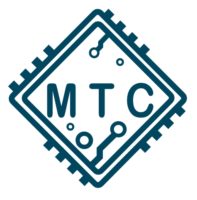Механічні та електричні вимірювання наноматеріалів засобами скануючої мікроскопії
Горбенко Є.О., Карнаушенко В.П., Пятайкіна М.І.
Автоматизація, електроніка та робототехніка. Стратегії розвитку та інноваційні технології, AERT-2020. с. 16-19.
Повний текст: PDF
Abstract
Scanning microscopy (SM) has become a powerful technique for the experimental study of anomaterials, since it can provide unprecedented details for individual nanostructures upon mechanical and electrical stimulus and thus uncover the fundamental deformation and failure mechanisms for their device applications. The given work is devoted to the modern developments in the field of in situ SM-based mechanical and electrical characterization techniques including tensile, compression, bending, and electrical property probing on individual nanostructures, as well as the state-of-the-art electromechanical coupling analysis. In addition, the advantages and disadvantages of in situ SM tests were also discussed with some possible solutions to address the challenges. Critical challenges for the development and design of robust in situ SEM characterization platform with higher resolution and wider range of samples.
Список використаних джерел.
1. D. J. Dingley, “A simple straining stage for the scanning electron microscope,” Micron (1969), vol. 1, no. 2, pp. 206–210, 1969.
2. D. S. Gianola, A. Sedlmayr, R. Mnig et al., “In situ nanomechanical testing in focused ion beam and scanning electron microscopes,” Review of Scientific Instruments, vol. 82, no. 6, Article ID 063901, 2011.
3. M. A. Haque and M. T. A. Saif, “Application of MEMS force sensors for in situ mechanical characterization of nano-scale thin films in SEM and TEM,” Sensors and Actuators A: Physical, vol. 97-98, pp. 239–245, 2002
4. H. Zhang, K. W. Siu, W. Liao, Q. Wang, Y. Yang, and Y. Lu, “In situ mechanical characterization of CoCrCuFeNi high-entropy alloy micro/nano- pillars for their size-dependent mechanical behavior,” Materials Research Express, vol. 3, no. 9, Article ID 094002, 2016.
5. C. Lee, X. Wei, J. W. Kysar, and J. Hone, “Measurement of the elastic properties and intrinsic strength of monolayer graphene,” Science, vol. 321, no. 5887, pp. 385–388, 2008.
6. Z. C. Leseman and T. J. Mackin, “Indentation testing of axisymmetric freestanding nanofilms using a MEMS load cell,” Sensors and Actuators A: Physical, vol. 134, no. 1, pp. 264–270, 2007
7. R. He and P. Yang, “Giant piezoresistance effect in silicon nanowires,” Nature Nanotechnology, vol. 1, no. 1, pp. 42–46, 2006
8. Z. L. Wang and J. Song, “Piezoelectric nanogenerators based on zinc oxide nanowire arrays,” Science, vol. 312, no. 5771, pp. 243–246, 2006.

